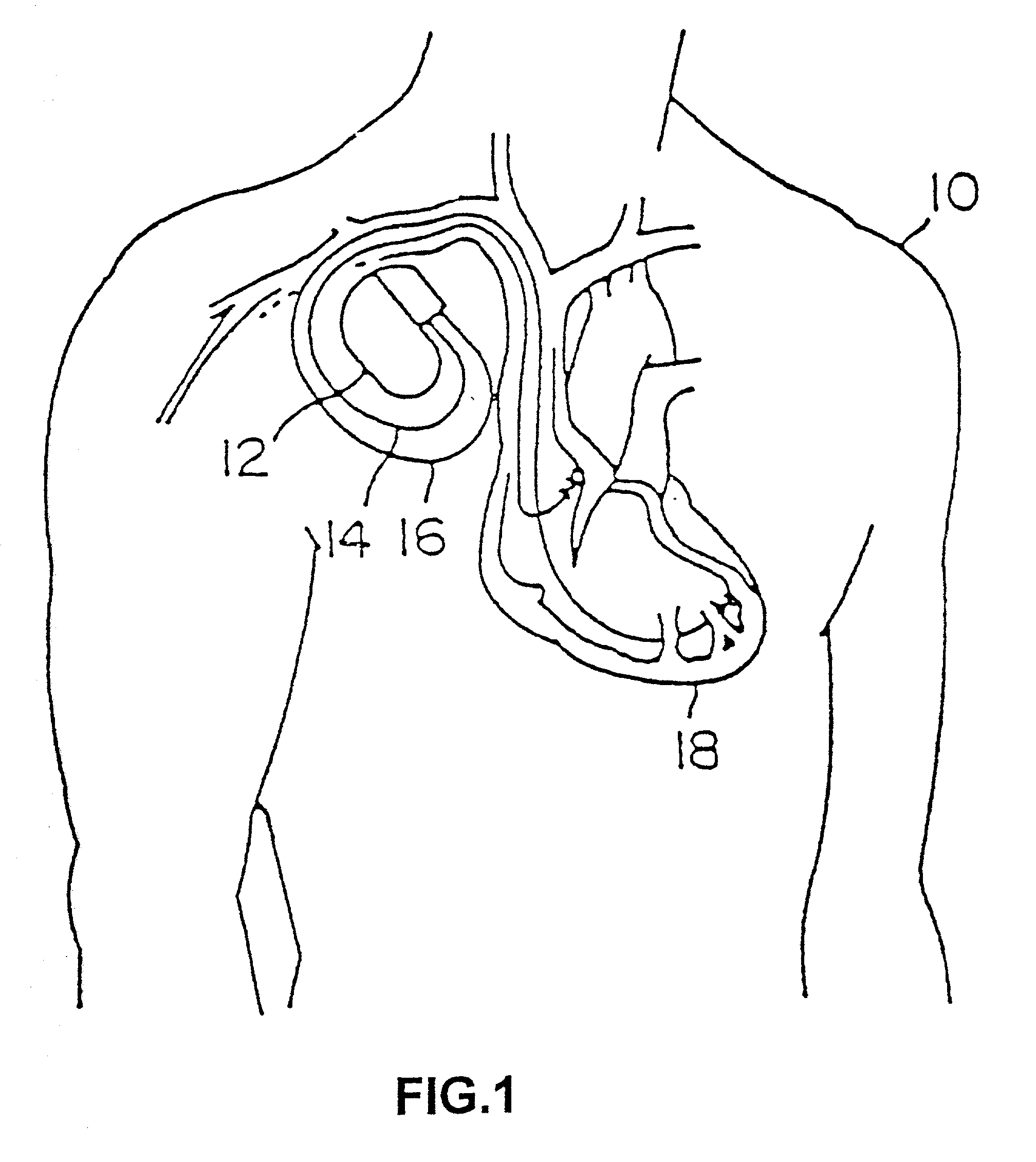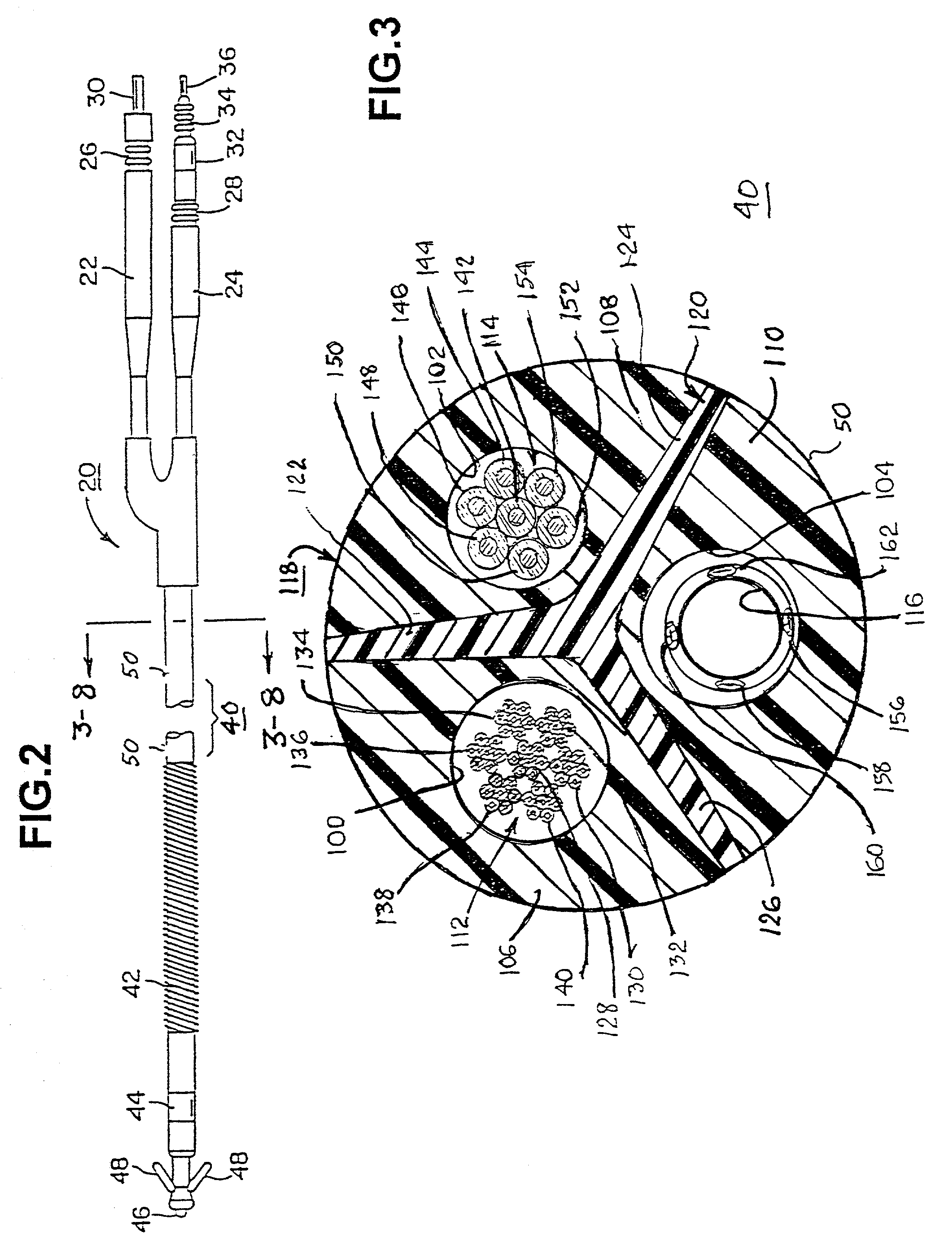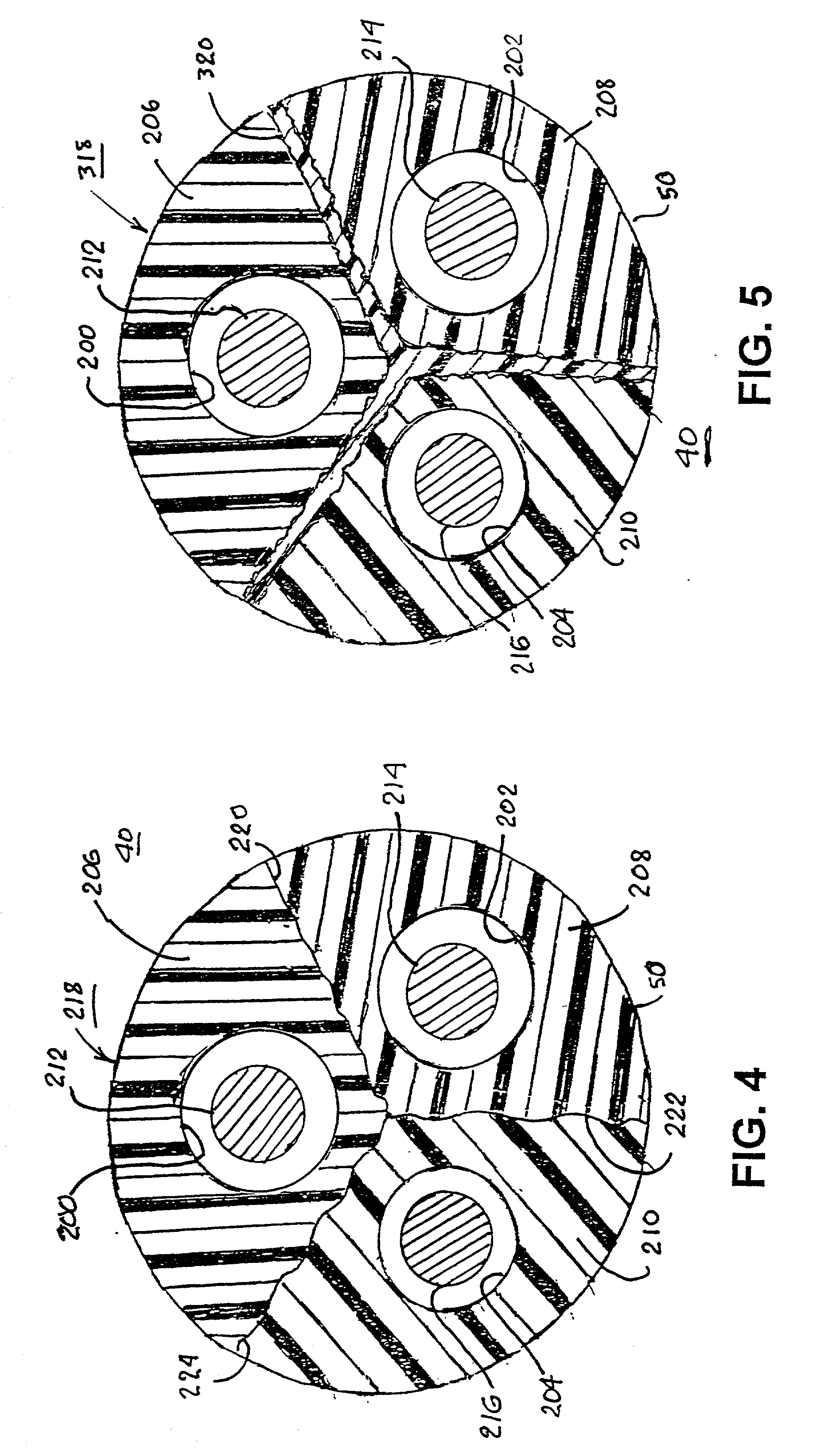Co-extruded, multi-lumen medical lead
a medical lead and multi-lumen technology, applied in the field of co-extruded multi-lumen medical lead, can solve the problems of untoward effect on device performance and patient well-being, deformation of the insulation or fracture of the lead conductor, and disadvantageous large lead body,
- Summary
- Abstract
- Description
- Claims
- Application Information
AI Technical Summary
Problems solved by technology
Method used
Image
Examples
Embodiment Construction
[0033] The present invention finds particular utility in the fabrication and implantation of cardiac leads, e.g., atrial and / or ventricular pacing leads and / or cardioversion / defibrillation leads having elongated lead bodies and lead conductors that are subject to fracture. Preferred embodiments of such lead conductor fabrications of such endocardial cardiac leads that are implanted transvenously will be described in detail. But, it is to be understood that the present invention is not limited to the same. The present invention can be implemented in the fabrication and use of other epicardial cardiac leads that are implanted subcutaneously and in electrical leads intended to be disposed within the patients body, including nerve, brain, organ, and muscle stimulation leads.
[0034] FIG. 1 depicts a typical arrangement of a pacing or implantable cardioverter / defibrillator (ICD) system implanted in a patient 10, the system comprising a subcutaneously disposed implantable pulse generator (I...
PUM
 Login to View More
Login to View More Abstract
Description
Claims
Application Information
 Login to View More
Login to View More - R&D
- Intellectual Property
- Life Sciences
- Materials
- Tech Scout
- Unparalleled Data Quality
- Higher Quality Content
- 60% Fewer Hallucinations
Browse by: Latest US Patents, China's latest patents, Technical Efficacy Thesaurus, Application Domain, Technology Topic, Popular Technical Reports.
© 2025 PatSnap. All rights reserved.Legal|Privacy policy|Modern Slavery Act Transparency Statement|Sitemap|About US| Contact US: help@patsnap.com



